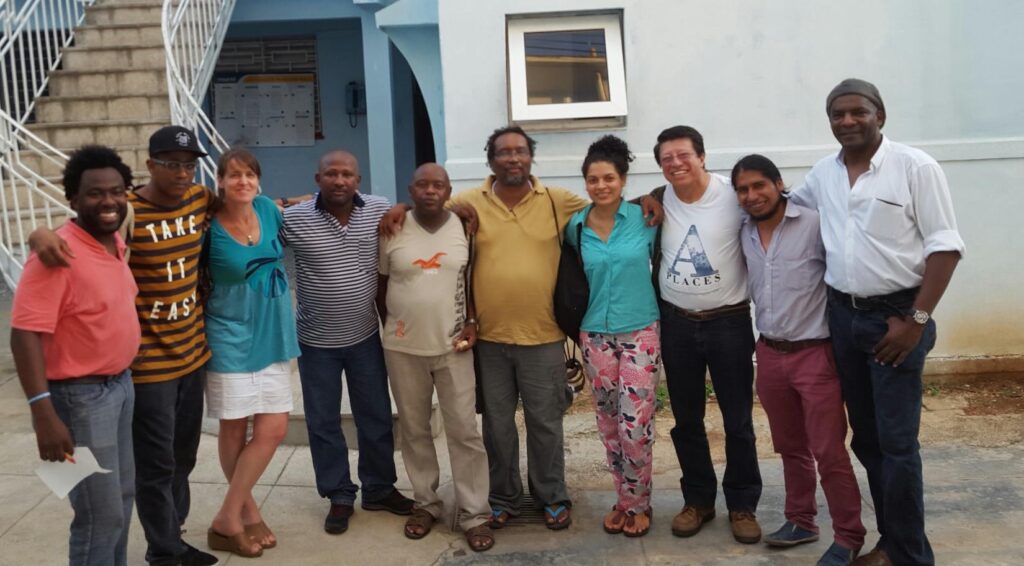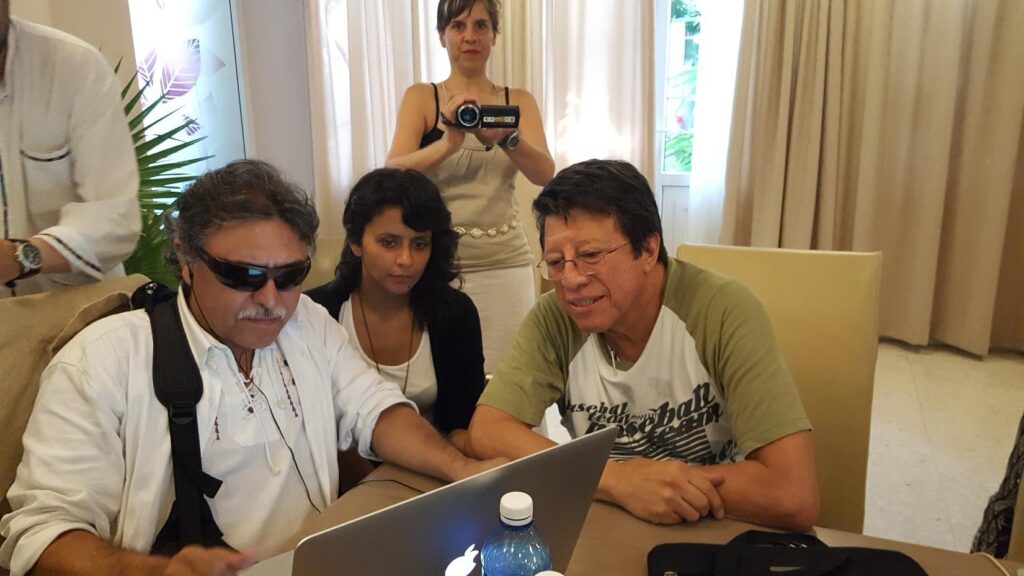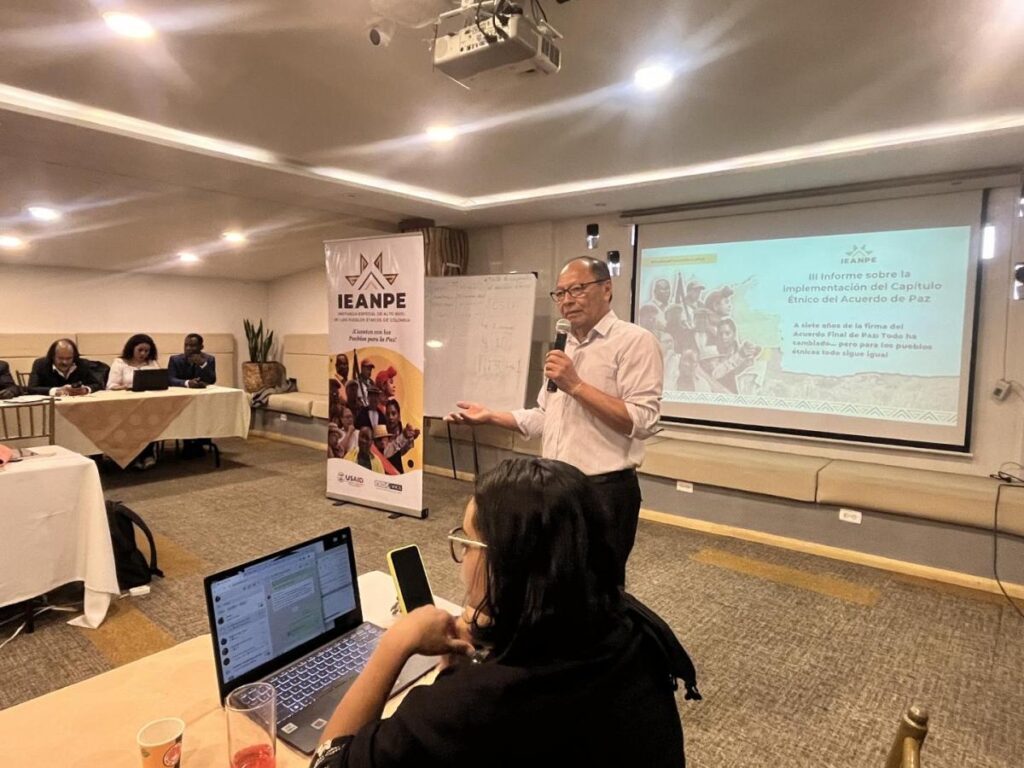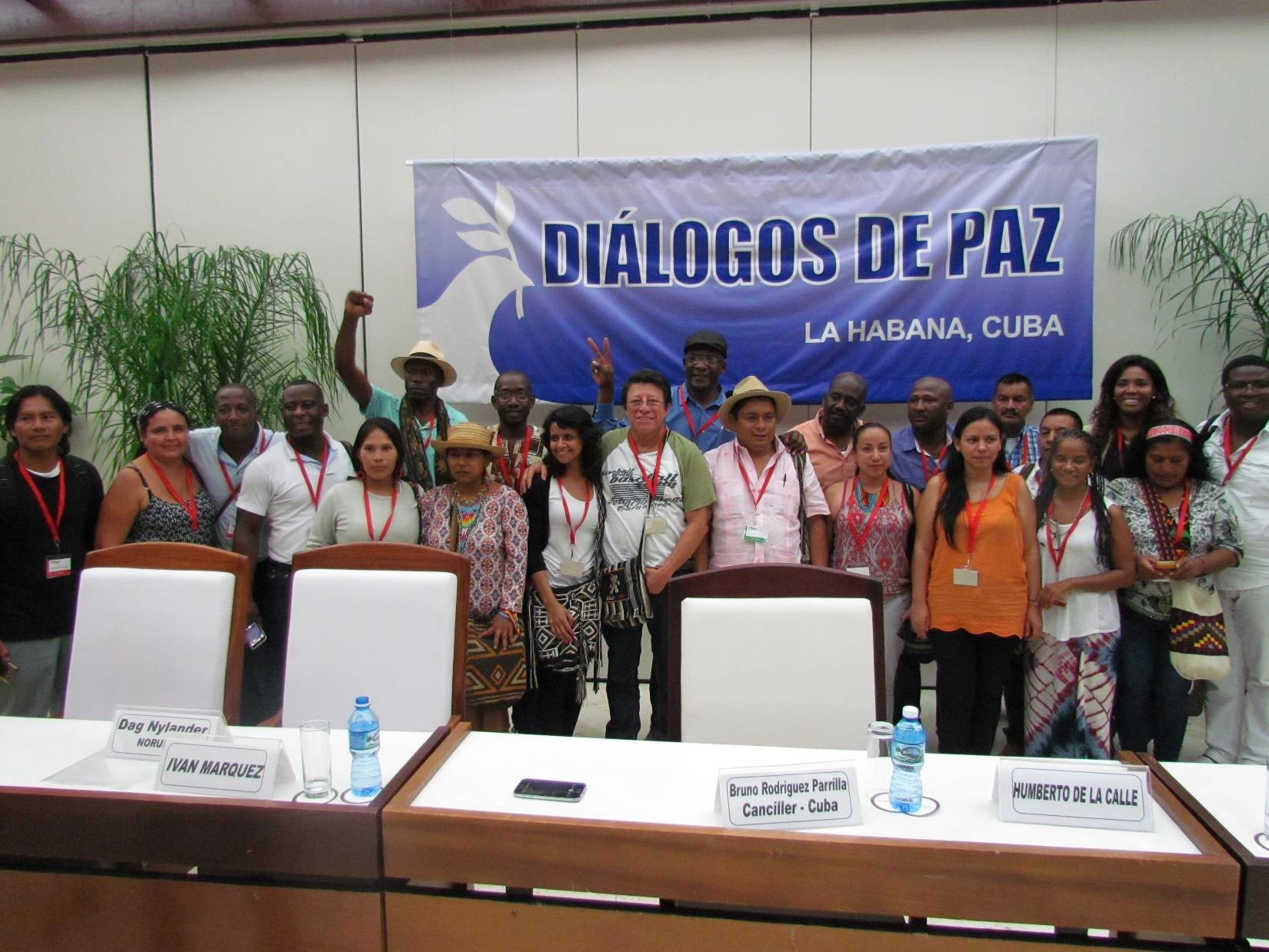The participation of ethnic peoples in the signing of the Peace Agreement between the Colombian State and the Revolutionary Armed Forces of Colombia - People’s Army (FARC-EP) is a unique case in human history. Beyond enhancing the final document, the Ethnic Chapter addresses a range of internationally recognized rights and explains how the internal armed conflict there disproportionately affected Indigenous and Afro-Colombian peoples. Nearly eight years after the signing, it is necessary to assess the progress made, the unmet commitments, and the lessons learned.
With the aim of ending more than 50 years of armed conflict and laying the foundation for a stable and lasting peace, the Colombian government, led at the time by Juan Manuel Santos, signed a Final Peace Agreement with the Revolutionary Armed Forces of Colombia–People’s Army (FARC-EP) on November 24, 2016. The final document was signed after several months of intense negotiations held in Oslo but mainly in Havana.
The parties negotiated six key points: 1- Comprehensive Rural Reform, aimed at transforming the countryside by closing the gap with urban areas and improving living conditions. 2- Political Participation, referring to the inclusion of new political forces without the use of violence. 3- Bilateral Ceasefire and Cessation of Hostilities, along with the disarmament of the FARC-EP. 4- Solution to the Problem of Illicit Drugs, providing economic alternatives to affected communities. 5- Agreement on Victims of the Conflict, with measures for truth, justice, reparation, and guarantees of non-repetition. 6- Mechanisms for Implementation and Verification of the agreement, as well as its endorsement by society.

Ethnic participation: an unprecedented eventuality on a global scale
As one of the two political actors in the Final Peace Agreement, the Colombian government was represented by then-President Juan Manuel Santos and the head of the negotiation team, Humberto de la Calle. Meanwhile, the FARC-EP was represented by its Commander-in-Chief, Rodrigo Londoño, and its chief negotiator, Luciano Marín. In addition, Cuba and Norway served as guarantor countries while Venezuela and Chile acted as accompanying nations.
During the negotiation process, ethnic peoples joined as a third political actor, marking an unprecedented event on a global scale. They were represented by the National Indigenous Organization of Colombia (ONIC), the Movement of Indigenous Authorities of Southwestern Colombia (AISO), and the National Afro-Colombian Peace Council (CONPA). Through their participation, they succeeded in including an Ethnic Chapter that recognizes that these peoples have been dispossessed of their lands, territories, and resources, severely impacted by the internal armed conflict and must be allowed to uphold their institutions, cultures, and traditions.
The Ethnic Chapter also incorporates the right to social, economic, and cultural identity and integrity, as well as rights over their lands, territories, and resources, and ensures legal protection and security for lands and territories that have been ancestrally and traditionally occupied.
The Ethnic Chapter also incorporates the right to social, economic, and cultural identity and integrity, as well as rights over their lands, territories, and resources.
The Ethnic Chapter also incorporates principles for implementing the components of the Final Agreement with an ethnic and cultural perspective with respect to non-regression, the elimination of racial discrimination and discrimination against women, self-determination, autonomy, self-governance, participation, consultation, and Free, Prior, and Informed Consent. Additionally, it enshrines the right to social, economic, and cultural identity and integrity, as well as rights over their lands, territories, and resources, and ensures legal protection and security for lands and territories that have been ancestrally and traditionally occupied.
Finally, the Ethnic Chapter established four key safeguards: 1- Prior, Free, and Informed Consultation on any measures that may affect them. 2- Right to Cultural Objection regarding any measures that impact their culture, traditions, and survival. 3- Cross-Cutting Ethnic Focus on women, families, and generations, which is also included in rural reform, political participation, addressing the issue of illicit drugs, reparations for victims, and implementation and verification. 4- Non-Regression of Rights, meaning that the implementation of the agreement cannot undermine previously acquired rights.

Regulatory developments following the agreement
Following the signing of the Final Peace Agreement, the necessary legal developments for its implementation commenced. Two primary stages were identified: fast track and post-fast track. Previously, the Legislative Act of July 1, 2016, had been enacted, establishing legal instruments to facilitate and ensure the implementation and regulatory development of the final agreement aimed at ending the conflicts and building a stable and lasting peace.
Through the fast track mechanism, 23 regulations were issued. Among the most significant of these are the creation of the Comprehensive System of Truth, Justice, Repair, and Non-Repetition, which includes the Special Jurisdiction for Peace (JEP), the Legislative Act for the Stability and Legal Security of the Final Agreement, the Legislative Act for the Political Reintegration of the FARC, and the establishment of Development Programs with a Territorial Focus (PDET), the Comprehensive Security System for Political Exercise, and the National Comprehensive Program for the Substitution of Illicit Crops (PNIS). Additionally, measures were established for the economic reintegration of FARC-EP members, humanitarian agreements, and the implementation of Comprehensive Rural Reform.
Following the fast track mechanism, several legal regulations were issued to facilitate the implementation of the Agreement. These included Law 1957 on the Administration of Justice within the Special Jurisdiction for Peace (JEP), Law 1958 for the reintegration of FARC-EP members into civil life in economic and social terms, Law 1959 on the protection of human rights defenders and their families, Decree 2278 to create the Colombia in Peace Fund, Law 2078 extending Law 1448 of 2011 on Victims and Land Restitution, Law 2197 on citizen security and territorial matters, Decree 1874 creating the Special Investigation Unit for prioritized crimes committed against social leaders, human rights defenders, and signatories of the Peace Agreement, and Decree 1591 establishing the Comprehensive Security System for Political Exercise.

The implementation of the Ethnic Chapter
The Framework Plan for Implementation, agreed upon by the Government and ethnic groups, outlines a detailed roadmap for the steps necessary to enact the Peace Agreement and its Ethnic Chapter. This plan seeks to translate the general agreements into concrete and measurable actions aimed at defining public policies, objectives, indicators, and timelines from an ethnic and cultural perspective. Additionally, it assigns institutional responsibilities, provides a cost estimate for carrying them out, and establishes mechanisms for their monitoring and verification.
As the eighth anniversary of the signing approaches, the Ethnic Chapter only 37 percent of it has been implemented, where points 4 and 5 (solutions to the problem of illicit drugs and the provision of economic alternatives, and the agreement on victims) are lagging the most. The same situation applies to the processes of collective land titling and the formal transfer of lands. Point 6, which concerns implementation, verification, and ratification, reflects the greatest progress, however, much of this involves management indicators rather than impact indicators.
According to a 2023 report from the General Comptroller of the Republic, the total accumulated investment for the implementation of the Final Peace Agreement between 2017 and 2022 was approximately 51.2 trillion Colombian pesos (12.3 billion dollars).
As the eighth anniversary of the signing approaches, the Ethnic Chapter only 37 percent of it has been implemented.
According to a 2023 report from the General Comptroller of the Republic, the total accumulated investment for the implementation of the Final Peace Agreement between 2017 and 2022 was approximately 51.2 trillion Colombian pesos (12.3 billion dollars). The investment was allocated annually as follows: 2.9 trillion pesos in 2017; 5.7 trillion pesos in 2018; 9 trillion pesos in 2019; 9.8 trillion pesos in 2020; 11.9 trillion pesos in 2021, and 11.9 trillion pesos in 2022.
Additionally, there is data regarding the economic investments associated with the Peace Agreement accumulated from 2017 to 2022: Comprehensive Rural Reform – 25.7 trillion pesos; political participation – 1 trillion pesos; end of the conflict – 4.8 trillion pesos; solutions to the drug problem – 4.9 trillion pesos; victims – 11.5 trillion pesos; and implementation, verification, and ratification- 3.3 trillion pesos.

Lessons on the implementation of the Ethnic Chapter
The Special High-Level Instance with Ethnic Peoples (IEANPE) played a crucial role in verifying compliance with the Ethnic Chapter. It produced reports that highlighted both progress and setbacks, advocated for increased attention to the needs of ethnic communities, and called for greater participation of these groups in the implementation process. Additionally, it expressed concern over the slow pace of many provisions of the Ethnic Chapter, noting significant gaps between commitments and actual actions taken. This is particularly evident in areas such as land restitution, the protection of social leaders, and the development of specific socioeconomic programs for these communities.
From the IEANPE, we believe that this first stage of implementing the Ethnic Chapter has provided several important lessons for ethnic peoples:
- Participation and Consultation: inclusion of ethnic peoples in negotiation and decision-making processes from the outset is essential.
- Ethnic Perspective: there is a recognized need for an ethnic and cultural perspective that considers cultural, social, and territorial specificities.
- Implementation Challenges: the execution of agreed-upon measures faces obstacles such as a lack of resources, bureaucratic hurdles, and the ongoing conflicts in ethnic territories.
- Organizational Strengthening: a process that contributes to enhancing the capacity of ethnic organizations to engage in dialogue with the State.
- Visibility: specific issues faced by ethnic peoples in the context of conflict and post-conflict have been brought to light.
- Institutional Coordination: improving coordination among various state institutions as necessary for more effective implementation.
- Monitoring and Oversight: establishing territorial monitoring and oversight mechanisms with the participation of ethnic peoples is crucial.
- Security: ongoing security challenges in some ethnic territories requiring effective guarantees for leaders, communities, and their lands.
- Comprehensive Reparation: collective reparation processes that must address both material and immaterial damages.
- Peace Processes: the inclusión of ethnic peoples as political actors who contribute to the construction, implementation, and verification of all agreements while safeguarding ethnic rights through their organizations.

Asdrúbal Plaza Calvo is a spokesperson for the Special High-Level Instance with Ethnic Peoples (IEANPE) and a member of the Movement of Indigenous Authorities of Southwestern Colombia (AISO). He is also a lawyer specializing in human rights and ethnic rights, and he holds a Ph.D. in Political and Social Sciences.
